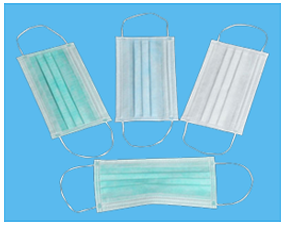ENDOCRYL® - N-Butyl-2 Cyanoacrylate was officially launched at the SGEI Annual
Conference in Kolkatta on 27th March,2005 by ‘ Prof. Nib Soehendra “ from Germany.
He has been one of the world pioneers in using N-Butyl-2 Cyanoacrylate for Gastroen-
-terological diseases.
Introduction
N-Butyl-2-cyanoacrylate is a liquid compound that polymerizes rapidly in the presence
of moisture and is used for the closure of uncomplicated skin lacerations. It is a surgical
adhesive that provide another option for wound closure. When compared to sutures
N-Butyl-2-cyanoacrylate is found to be as effective as sutures in low tension lacerations
and for the attachment of some full thick ness skin grafts.
Characteristics of N-Butyl-2-cyanoacrylate
N-Butyl-2-cyanoacrylate is a monomer which when comes into contact with moisture of
the skin’s surface chemically changes into a polymer that binds to the top epithelial layer.
This polymer forms a cyanoacrylate bridge, binding the two wound edges together and
allowing normal healing to occur below. N-Butyl-2-cyanoacrylate has also been shown to
have antimicrobial properties.
N-Butyl-2-cyanoacrylate was developed in the 1970s, as the first adhesive to have
negligible tissue toxicity and good bonding strength, as well as acceptable wound cosmesis.
It has been observed that N-Butyl-2-cyanoacrylate has been used:
• In cartilage and bone grafting, coating of corneal ulcers in ophthalmology,
• Repair of damaged ossicles in otolaryngology,
• Coating of aphthous ulcers,
• Embolization of gastrointestinal varices and embolization in neuro vascular surgery.
 Instantaneous Solidificatioin contact with blood
Instantaneous Solidificatioin contact with blood
 Long shelf stability, Ease of application
Long shelf stability, Ease of application Polymerization in presence of moisture and alkali
Polymerization in presence of moisture and alkali Liquid consistency-easy spreadability
Liquid consistency-easy spreadability Minimum heat production during polymerization
Minimum heat production during polymerization Forms a strong and flexible bond with tissue
Forms a strong and flexible bond with tissue Bacteriostatic, Biodegradable
Bacteriostatic, Biodegradable Negligible histotoxicity & nor-carcinogenic
Negligible histotoxicity & nor-carcinogenic Forms a strong and flexible bond with tissue
Forms a strong and flexible bond with tissue Negligible histotoxicity & non-carcinogenic
Negligible histotoxicity & non-carcinogenic General and GI surgery
General and GI surgery Plastic and Cosmetic Surgery
Plastic and Cosmetic Surgery paediatrics
paediatrics Gynaecology
Gynaecology Gastroenterology
Gastroenterology Dentistry
Dentistry Ophthalmology
Ophthalmology Composition - 0.25ml, 0.5ml and 1ml
Composition - 0.25ml, 0.5ml and 1ml

